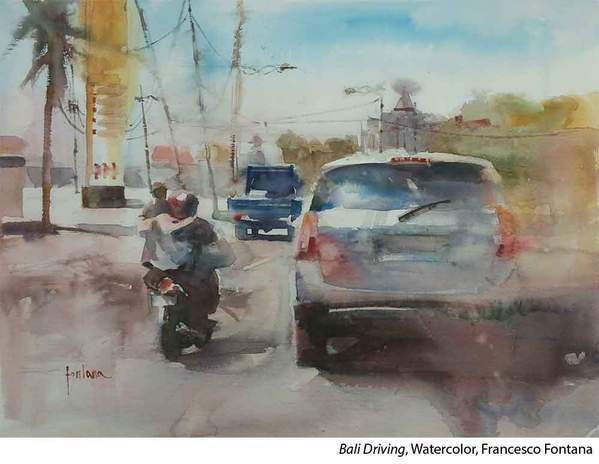
Francesco Fontana refers to his watercolor process as the alla seconda method. “The alla seconda method basically means I separate the moment I collect ideas from the moment I actually paint the painting,” says Francesco Fontana. “The way to do this is to make simple studies in a sketchbook, as I walk around — with no pressure for the final result. That helps me as an artist focus on observation of the environment. Once I do this, I can paint on site, or in my studio, or even days later.
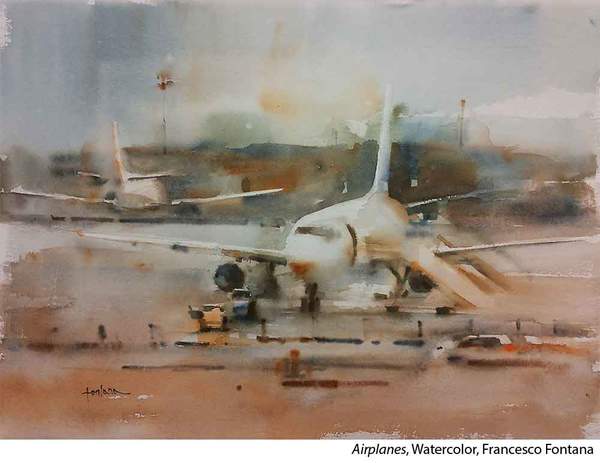
Step 1: “In general, my first step is to draw, from life or a photo reference, one or more value and compositional sketches.I decide how many tones I want in my design. Five is my maximum, but sometimes I just use three. I insist that they are an odd number, so I always have a mid-tone equidistant from the higher and the lower (white and black). I might change the value of a shape in order to have a dominant value, but in general, I just group them, simplifying the subject to a readable scheme.
“Sometimes those studies can stand on their own as artwork.
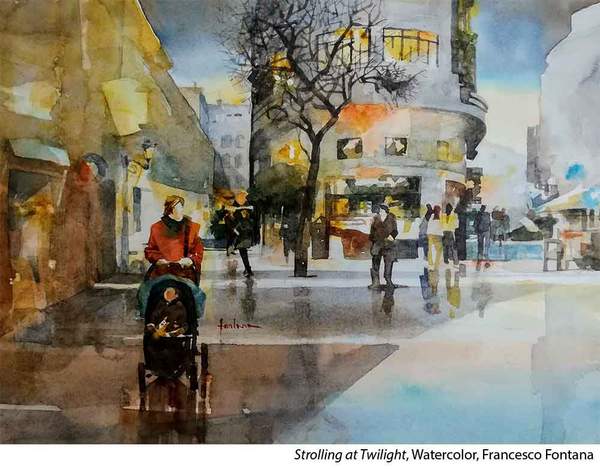
Step 2: “I jot down color notes on my value sketch. Following my value design, I reduce the scene to a limited color scheme and play with it. I do not necessarily make dramatic changes to the local colors. However, I will make sure either the warm or cool scheme is dominant. It’s my way to create a mysterious atmosphere.
“I set my color arrangement with two complements plus one adjacent color. I lay in a very light wash to establish the key temperature, then let it dry before outlining my main shapes. Sometimes I number them according to value grades (other times outlining comes first). Then I paint just the focal elements — and big shapes. In a couple of steps, I let the paper dry and draw (and then paint) additional elements as fractions of the big shapes.
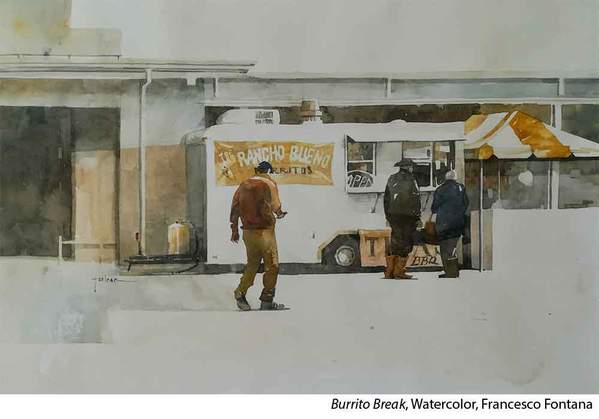
TAKING YOUR TIME TO CONNECT TO THE SUBJECT
“I understand the expressive urge to grab the brush and get into action. It happens to me, too! But studying the subject means understanding its real nature, identifying its’ special qualities and becoming aware of what does and what doesn’t contribute to that purpose. It’s more than merely copying.
“Students are often obsessed by describing the scene photographically. I guess they feel guilty if they betray reality. For beginners, it’s understandable; they haven’t yet mastered the tools to interpret it. But competition with visual technology is a lost cause. A painting should always look like a painting!”
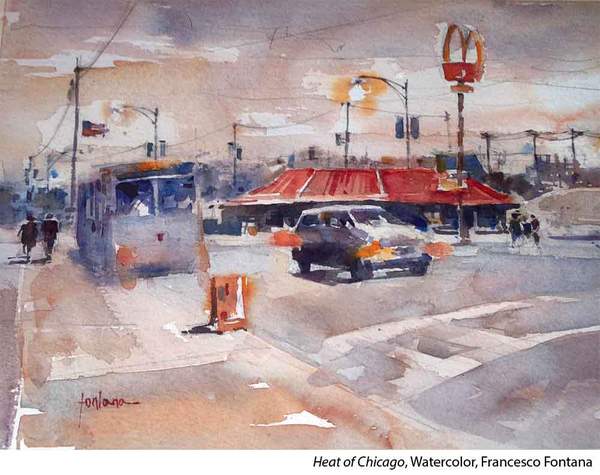
Francesco Fontana has spent his professional life working in oil, watercolor, acrylic and dry media. After art school, he followed his dream and started his artist journey in bohemian Paris, as a portrait artist. In the years to follow, he exhibited his art in Italy and France and his paintings are now in many private collections in Europe, USA, and Asia. He demonstrates his process in the video workshop “Watercolor the Italian Way: The Alla Seconda Method.”








I love the artist’s descriptions of their thoughts and feelings of their approach to paintings. Thanks for this great website. I am a new user and look forward to each to each stallment.
I wish i had the information imparted by Francesco Fontano when I first started painting in watercolour. How many countless hours of unrequited effort it would have saved me. Now I have it however, I’m going to make the very most of it. Thank you Francesco for your generosity in sharing your knowledge and a special thank you to American Watercolor for delivering it!
Lot of interesting details via Francesco’s descriptive painting process, like, “(values) I insist that they are an odd number, so I always have a mid-tone equidistant from the higher and the lower (white and black).”
Simple & effective; not to mention really nice work 😊